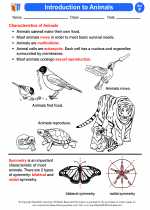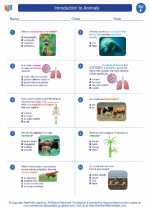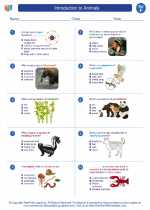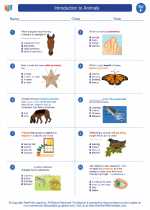Mechanical Systems
A mechanical system is a combination of interconnected parts that work together to accomplish some function. These systems can be found in everyday objects such as bicycles, cars, and even the human body.
Key Components of Mechanical Systems
- Input: The part of the system where the energy is initially applied.
- Output: The part of the system that produces the desired result or work.
- Mechanical Advantage: The ratio of the output force to the input force in a mechanical system.
- Force: The push or pull that can cause an object to change its speed, direction, or shape.
- Motion: The act or process of changing position or place.
- Friction: The resistance that one surface or object encounters when moving over another.
Types of Mechanical Systems
There are various types of mechanical systems, including:
- Simple Machines: Devices that require only the application of a single force to work, such as levers, pulleys, and inclined planes.
- Complex Machines: Systems that consist of multiple simple machines working together, such as bicycles, cars, and cranes.
- Biomechanical Systems: Systems found in living organisms, such as the skeletal and muscular systems in humans.
Study Guide
When studying mechanical systems, it's important to focus on the following key concepts:
- Understanding the relationship between input and output in a mechanical system.
- Identifying and analyzing the types of forces involved in a mechanical system, such as friction and mechanical advantage.
- Recognizing and explaining the functions of different types of simple and complex machines.
- Exploring real-life examples of mechanical systems and how they impact our daily lives.
By mastering these concepts, you'll gain a deeper understanding of the role mechanical systems play in the world around us.
Good luck with your studies!
.◂Science Worksheets and Study Guides Sixth Grade. Introduction to Animals
Study Guide Introduction to Animals
Introduction to Animals  Activity Lesson
Activity Lesson Introduction to Animals
Introduction to Animals  Worksheet/Answer key
Worksheet/Answer key Introduction to Animals
Introduction to Animals  Worksheet/Answer key
Worksheet/Answer key Introduction to Animals
Introduction to Animals  Worksheet/Answer key
Worksheet/Answer key Introduction to Animals
Introduction to Animals  Vocabulary/Answer key
Vocabulary/Answer key Introduction to Animals
Introduction to Animals  Vocabulary/Answer key
Vocabulary/Answer key Introduction to Animals
Introduction to Animals  Vocabulary/Answer key
Vocabulary/Answer key Introduction to Animals
Introduction to Animals  Vocabulary/Answer key
Vocabulary/Answer key Introduction to Animals
Introduction to Animals 

 Activity Lesson
Activity Lesson
 Worksheet/Answer key
Worksheet/Answer key
 Worksheet/Answer key
Worksheet/Answer key
 Worksheet/Answer key
Worksheet/Answer key
 Vocabulary/Answer key
Vocabulary/Answer key
 Vocabulary/Answer key
Vocabulary/Answer key
 Vocabulary/Answer key
Vocabulary/Answer key
 Vocabulary/Answer key
Vocabulary/Answer key

The resources above cover the following skills:
LIFE SCIENCE
From Molecules to Organisms: Structures and Processes